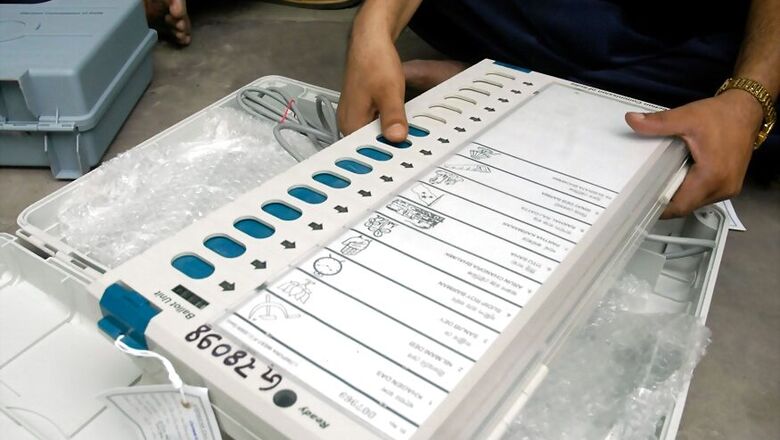
views
New Delhi: Ahead of the crucial Lok Sabha elections, democracy’s largest exercise, the Technical Expert Committee in a report on Monday established that since the Electronic Voting Machines (EVMs) used in polling are standalone machines, the chances of them being tampered with, are ruled out.
The Committee’s findings were also cited by the Chief Election Commissioner Sunil Arora on Sunday, while announcing the full schedule for the Lok Sabha polls. Formed in 2010, the members of the committee include, Dr DT Sahani, professor at Emeritus, IIT Delhi, Professor Rajat Moona Director, former DG Centre for Development of Advanced Computing and Prof Dinesh K Sharma, a professor at IIT Bombay.
The explanation comes in the backdrop of alleged EVM hacking rampant in the General Elections of 2014, made by a self-proclaimed cyber-expert Syed Shuja in a press conference in UK in January. At that time, Moona, who is one of the committee members, in a press conference said that the allegations had no scientific basis.
The ECI-EVMs are stand-alone machines designed to connect only among ECI-EVM units (ballot unit, control unit and VVPAT) through cables that remain in full public view, the committee said.
According to the information available on EC’s website, the secure design feature of the ECI-EVM is, that it is a “standalone machine, where radio frequency transmission and wireless communication is not possible. It is not connected to any network through wire or wirelessly.”
“There is no mechanism in ECI-EVMs to communicate with any device through wireless communication on any Radio Frequency. All versions of ECI-EVMs are regularly and rigorously tested against low to high wireless frequencies. These tests include and goes beyond the standard tests specified for electronic equipment,” reads the statement on the EC website.
Shuja, in his allegations had also said that the two-side printing of VVPAT paper was flawed, as the front side of the print which is verified by the voter gets erased. Refuting these claims, the committee clarified that VVPATs use thermal printers which can print on only one side of the thermal paper.
“The print is fully visible through the viewing window. The paper rolls used in VVPATs have only one-sided thermal coating and hence can be printed only on one side. The VVPAT paper print lasts at least for five years,” the committee said.
Another important feature of the ECI EVMs, cited by the expert committee, is that it is manufactured by the Public Sector Undertakings (PSUs) – BEL and ECIL – both of which deal with the manufacturing of sensitive equipment critical to the safety and security of the nation and have strong security protocols. “The CMDs of Bharat Electronics Limited and Electronics Corporation of India Limited, who are the sole manufacturers of EVMs and now also VVPATs, reaffirmed that all the TEC prescribed Standard Operating Procedures are scrupulously adhered to and observed,” it said.
The committee also provided further explanations as to why many countries have discarded EVMs in voting exercise, stating, “ "Because the foreign EVMs are mostly networked, unlike ECI's that are standalone machines. Also the foreign machines are manufactured by private entities unlike the ECIs that are manufactured by PSUs."
















Comments
0 comment